memo30-09-08
Seasonal Events
September
CHOYO
If you want to see the image at full size,
save it and see it.
(Confirmed with google chrome)
![]()
national holiday - Sep. 9
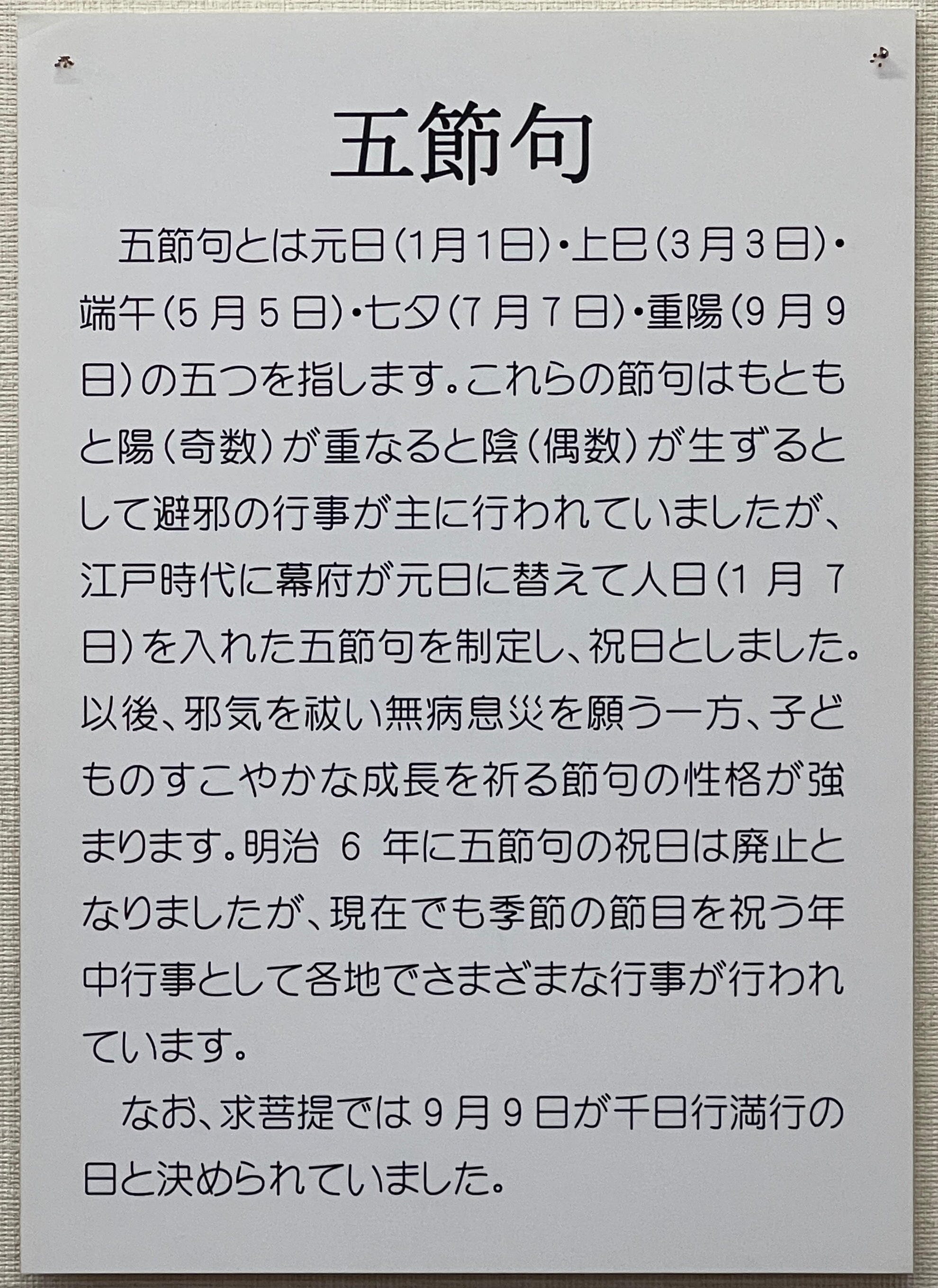
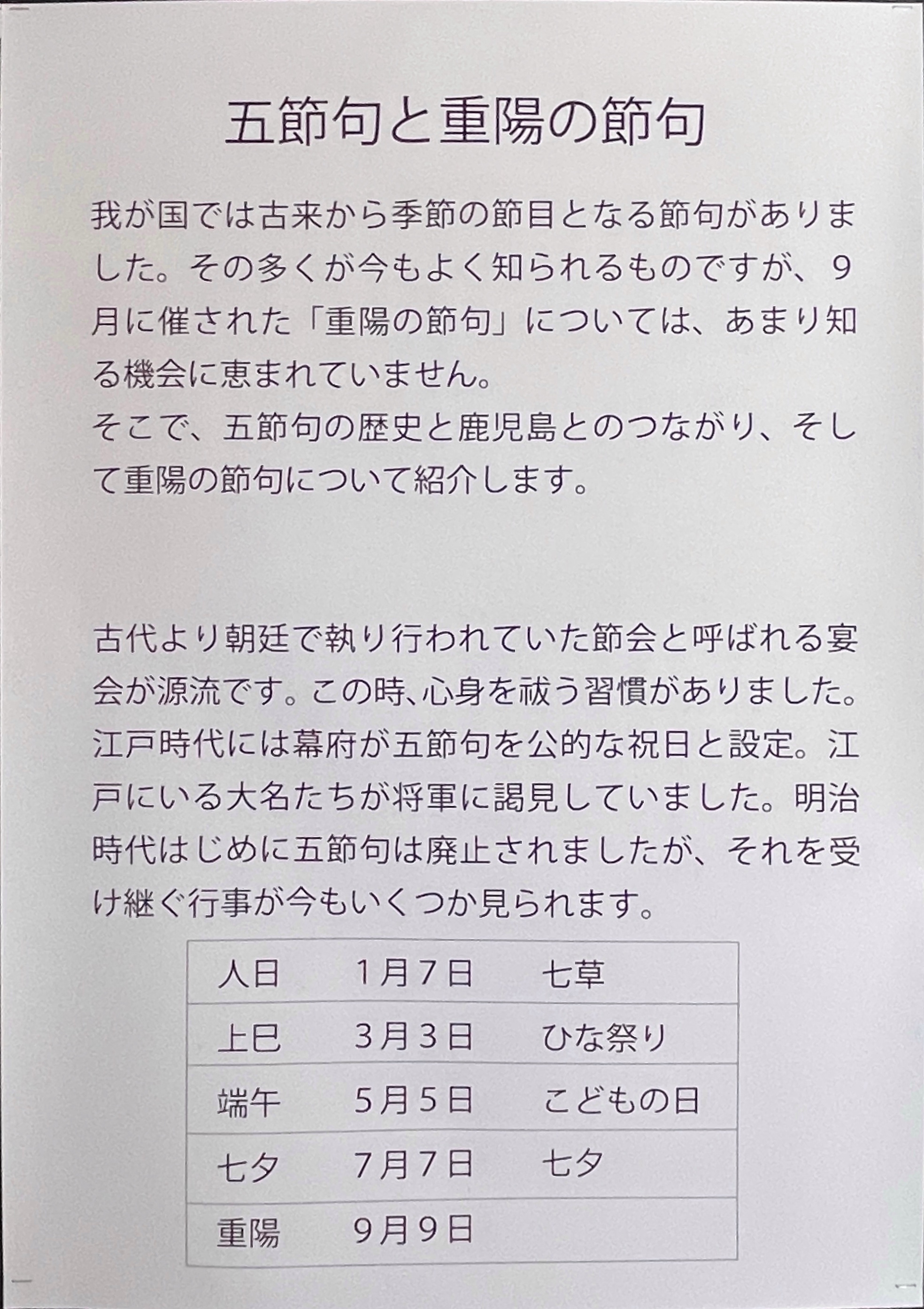
From ancient times, there was a banquet called "Sechie" that was held at the imperial court.
"Sechie" is done at seasonal and agricultural milestones.
At that time, it was customary to purify body and soul by making offerings to the spirits and praying to them.
This is the origin of "Sekku."
Thus, "Sekku" was originally an ancient Shinto ritual that was influenced by Buddhist events or ideas that came to Japan along the way, and has been transmitted to the present day as a mixed culture.
"Sekku" is sometimes collectively referred to as "Go(5)Sekku".
"Go(5)Sekku" is celebrated five days a year: "Jinjitsu" on January 7, "Jhoshi" on March 3, "Tango" on May 5, "Shichiseki" on July 7, and "Choyo" on September 9.
The originally existing "Go(5)Sekku" was re-designated as a national holiday by the central government during the Edo period, and was abolished in 1873.
However, even after "Go(5)Sekku" was discontinued, it became a common event and has remained so to this day.

In this page, we introduce "Choyo no Sekku".
"Choyo no Sekku" is an event to wish for immortality and longevity by decorating chrysanthemum flowers and drinking chrysanthemum wine.
They also eat chestnuts mixed with rice.
In ancient China, there is a legend that drinking the dew that falls from chrysanthemum flowers will bring longevity.
This is why the chrysanthemum has been established as a flower to wish for immortality and to ward off evil spirits.
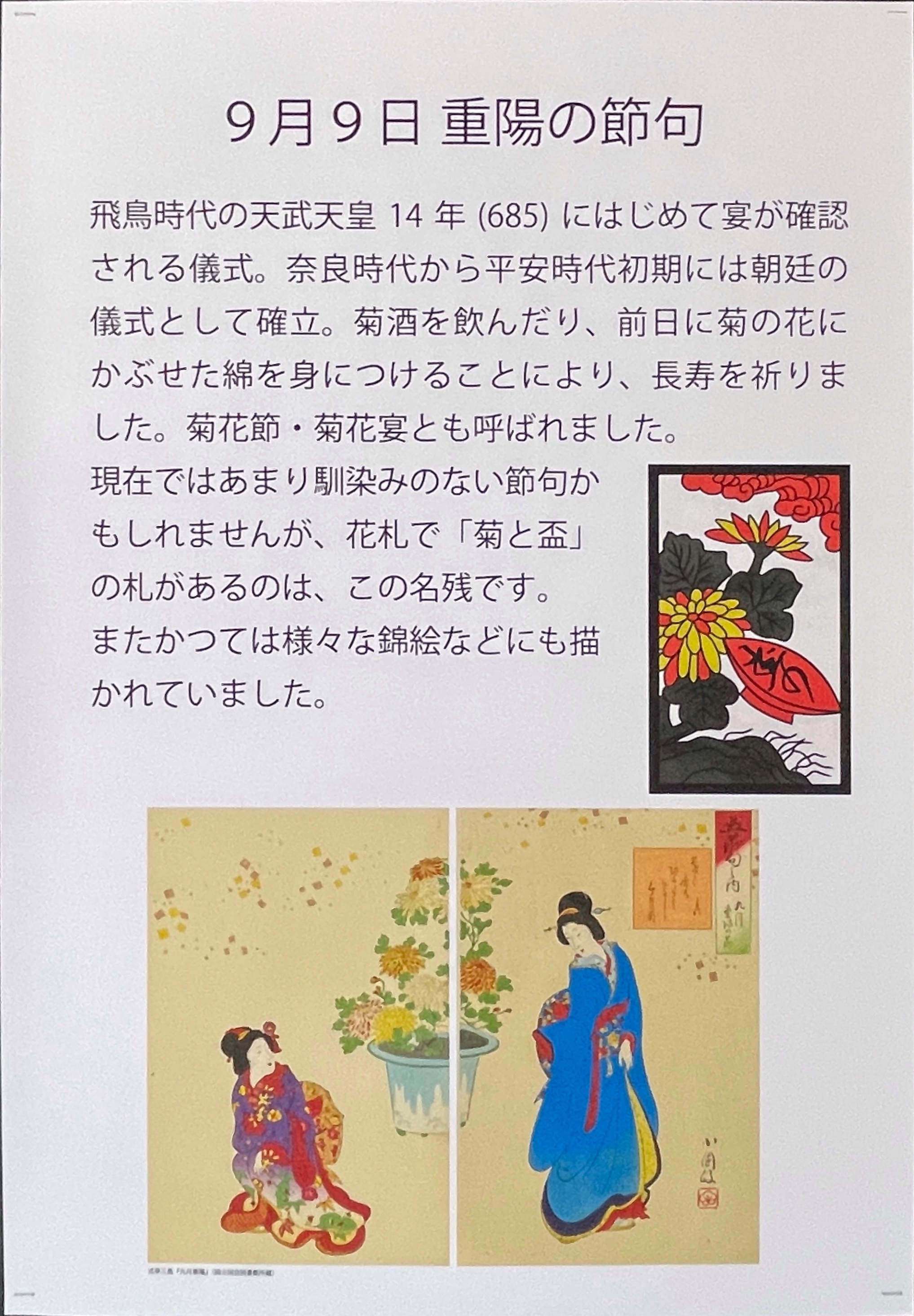
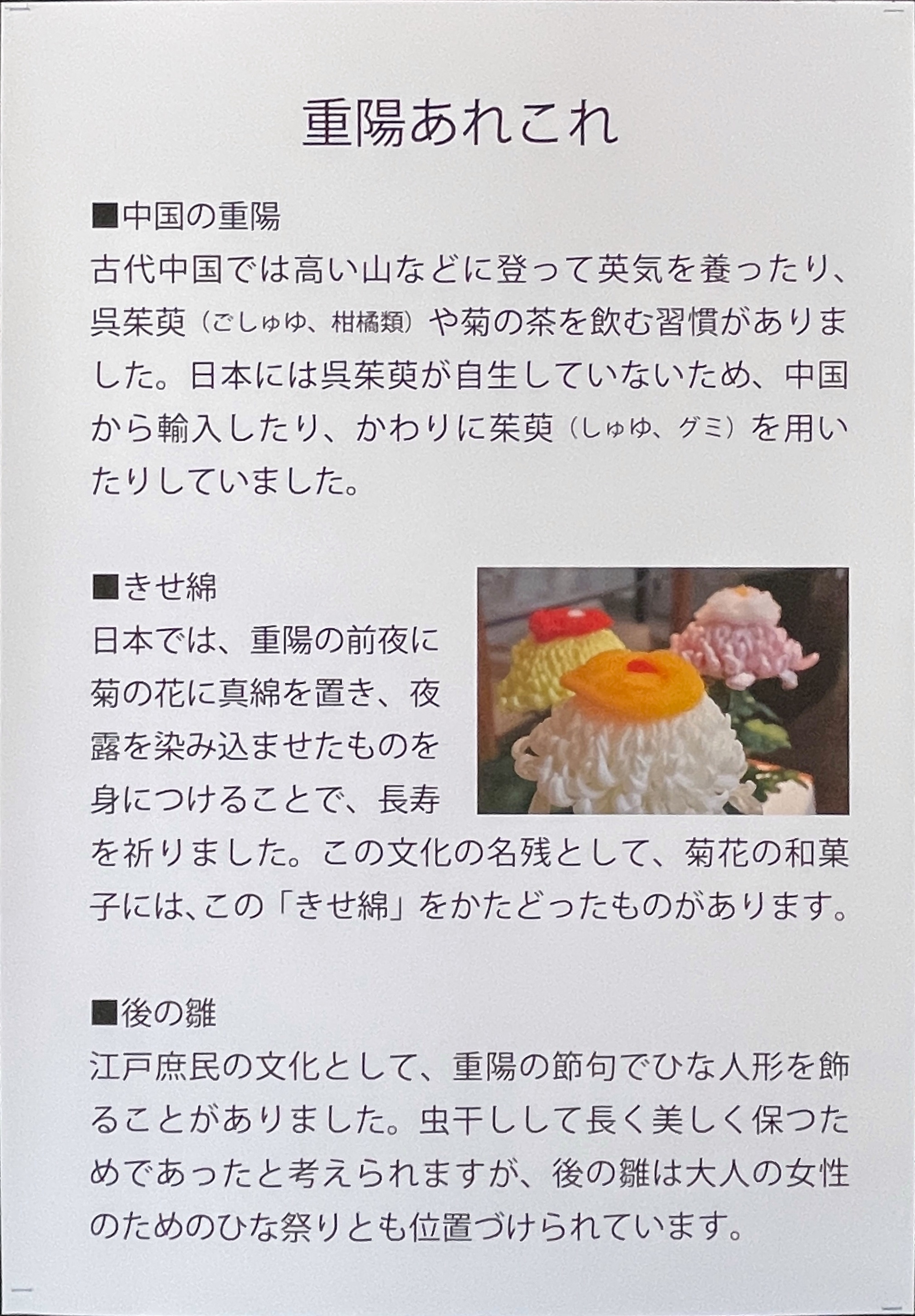
"Choyo no Sekku" is the earliest confirmed record of the event, having taken place in 685.
On the eve of "Choyo no Sekku," people place chrysanthemum flowers on cotton and pray for long life by wearing the cotton soaked with the night dew.
"Kisewata," a Japanese confectionery, is an expression of this culture.
Hina dolls decorated at "Jhoshi no Sekku" on March 3 may also be displayed at "Choyo no Sekku" on September 9.
This is called "Nochi no Hina" and is a "Hina festival (Hinamatsuri)" for adult women.
This also serves as maintenance for the dolls by drying them out.

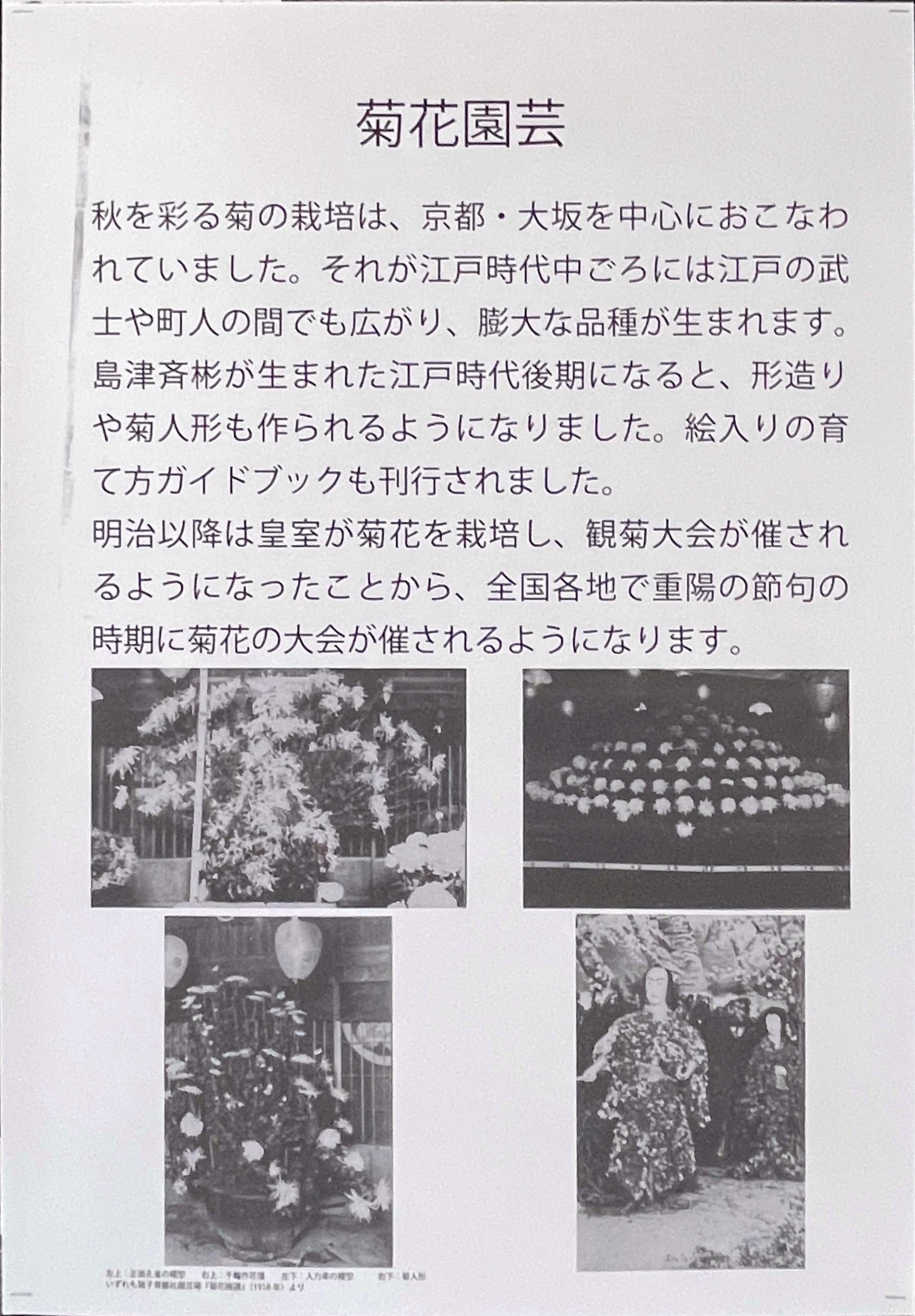
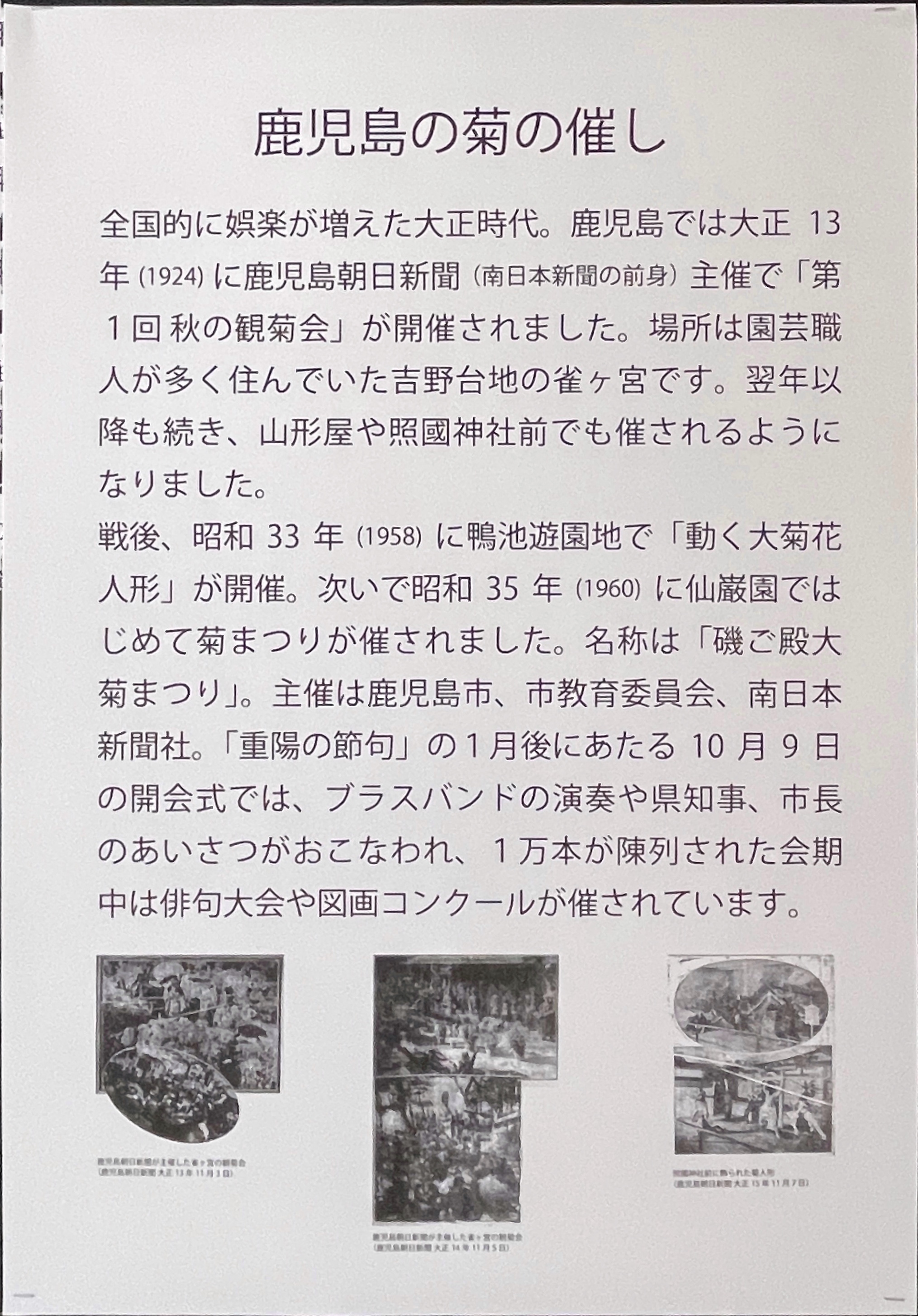
#
#kimura
#takayuki
#木村
#隆之
#Japan
#Japanese
#Travel
#Sightseeing
#tourism
#garden
#Museums
#scenery
#Landscape
#shrine
#temple
#church
#castle
#view
#historical facilities
#shrinesandtemples
#日本
#観光
#旅行
#日本庭園
#博物館
#神社
#寺
#景観
#城
#教会
#
#
#
#
#
#
#
#
#
#
#
#
#
#